Greater Flamingo (Loriculus vernalis)
The Greater Flamingo (Phoenicopterus roseus) is the largest amongst the flamingos averaging 110-150cm in height and weighing around 2-4 kg.
Presenting you the below photographs taken of the greater flamingos (and one lesser flamingo at the end) with the flamingo facts in captions.
Location: Shar Road, Shriharikota, pulikat, Andhra Pradesh. (Few from other places is mentioned in location below the photograph)
Equipment: Canon 7D, Canon 300mm, Canon 500mm, 1.4TC.
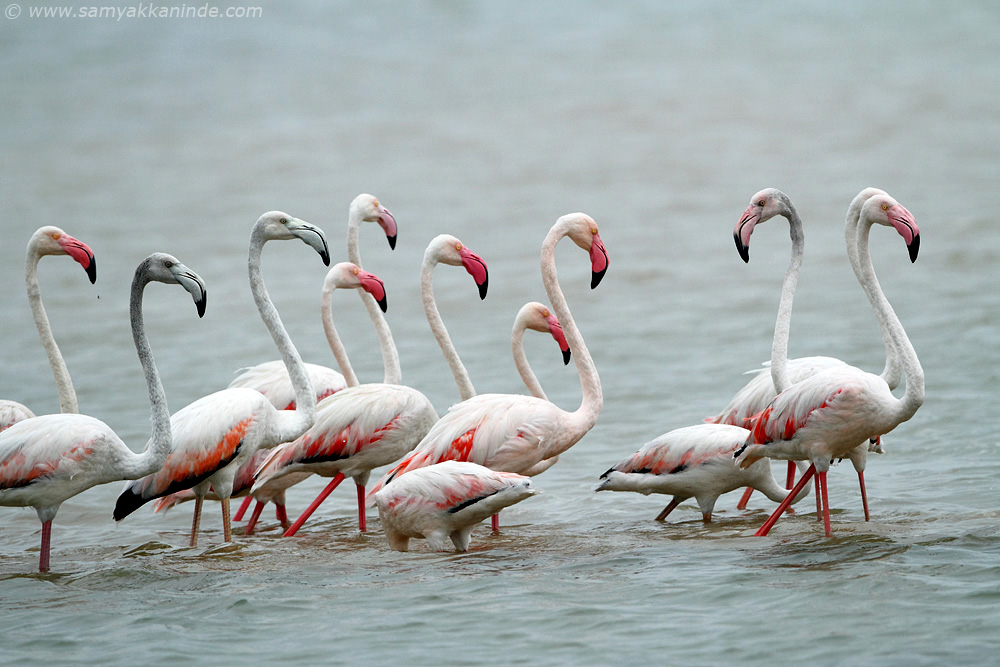
1. The flamingos are highly social and normally found in large flocks. They are commonly found feeding together in the shallow coastal lagoons with salt water.
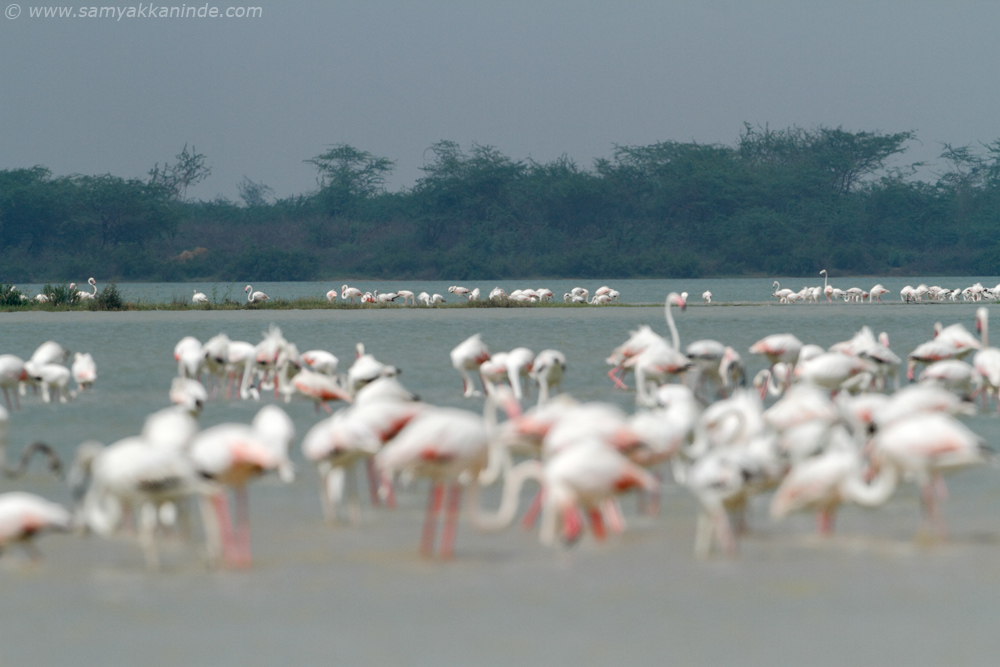
2. The flamingos put their head upside down inside water for feeding. By using feet, they stir up the bottom, suck water through their beaks. The specialised beaks then filter out the microscopic organisms, algae, shrimps and sometimes small fishes too.
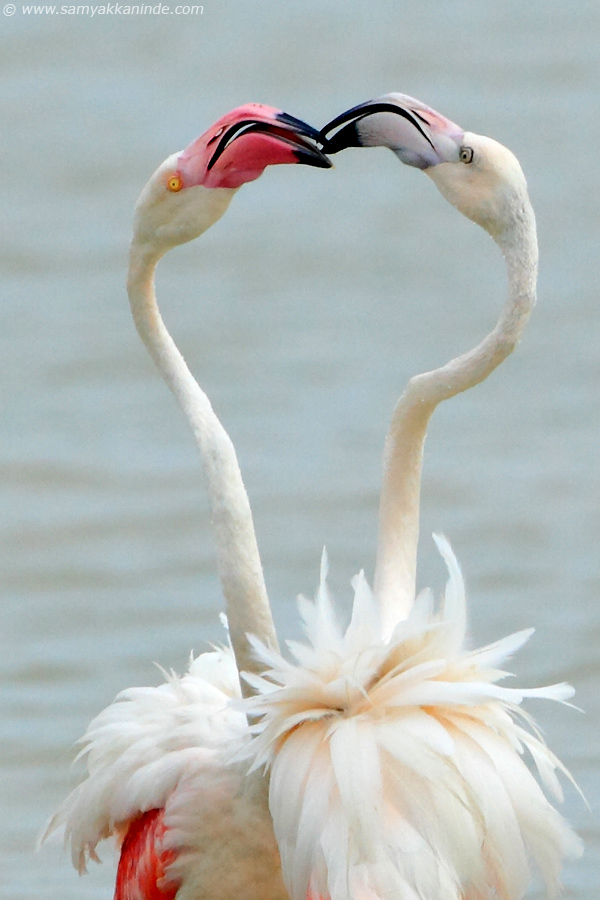
3. While feeding, you would commonly see two flamingos fight with each other using the beaks and their long necks. It lasts just for few seconds before they resume their feeding again, by putting their neck down in water.
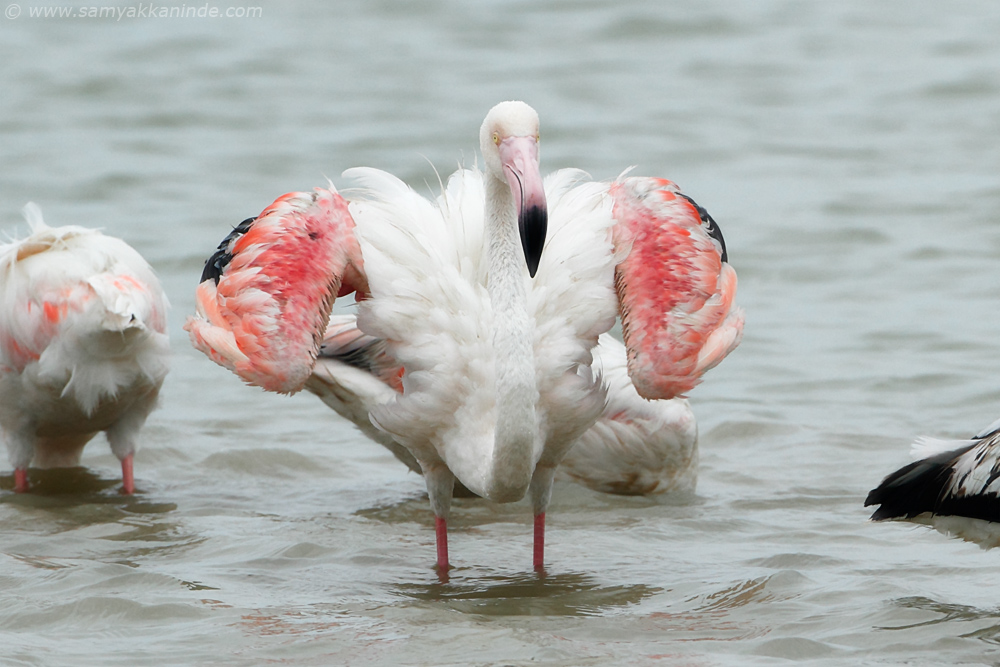
4. The presence of certain carotenoid pigments in the algae and crustaceans are what give the flamingo its distinctive pink plumage. Seen here is flamingo which just opens up its wings for few seconds after preening is done.
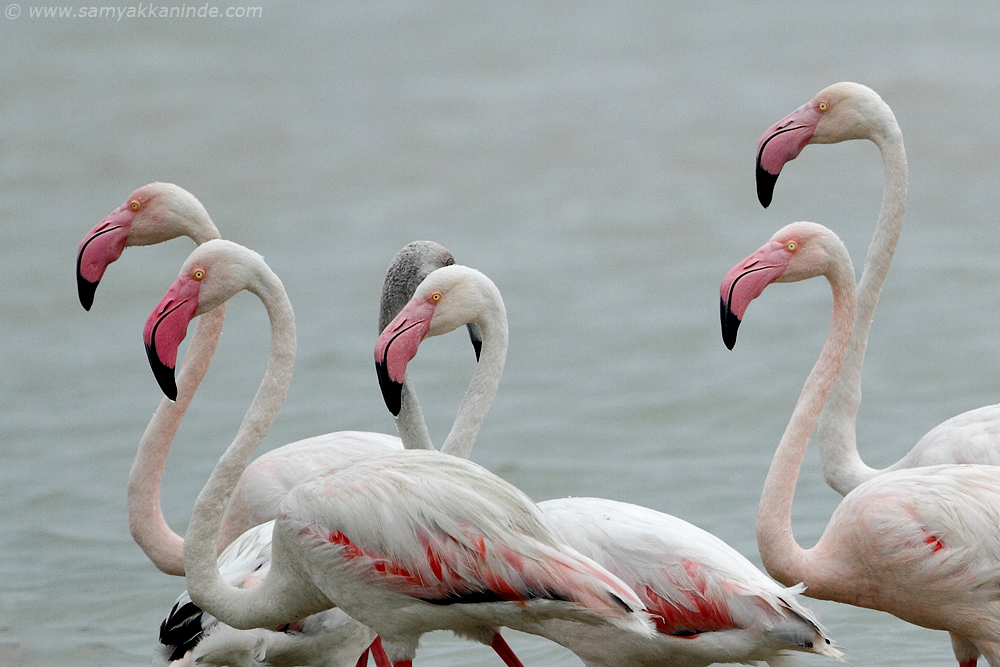
5. A flamingo normally lays a single egg which is incubated for around 30 days. The chick fledges in 3 months time. Amazingly, the flamingo can recognize its chic from thousand others by its call in large breeding colonies.

6. A flamingo normally lives for around 40 years in wild (60-70 in zoos). It reaches a sexual maturity in around 3 years and breeds first time only when it is 5-10 years old.
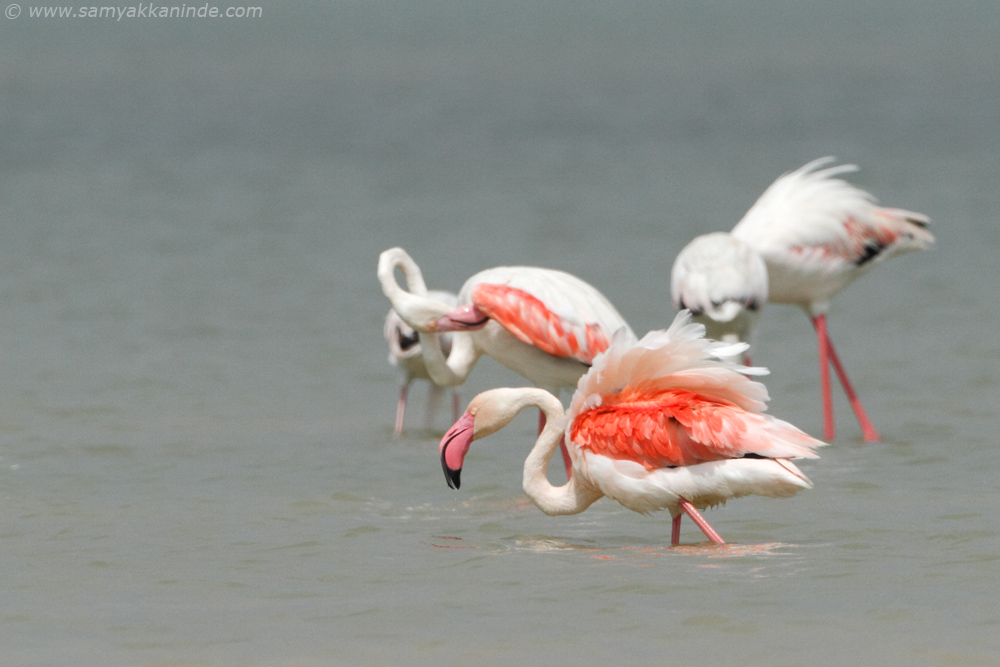
7. Most of the plumage is pinkish-white, but the wing coverts are red and the primary and secondary flight feathers are black. Seen here are red coverts as the wind just fluffed the wings of this flamingo.
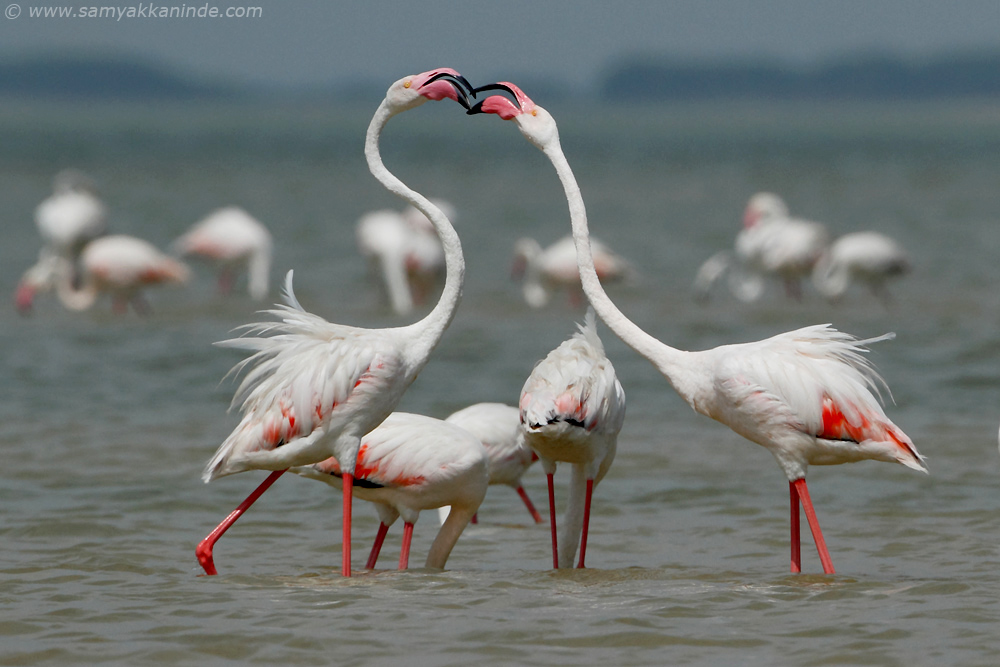
8. The greater flamingos are most widespread in the 6 species of flamingos. The northern part of resident flamingos migrate to southern parts of india in the winter months.
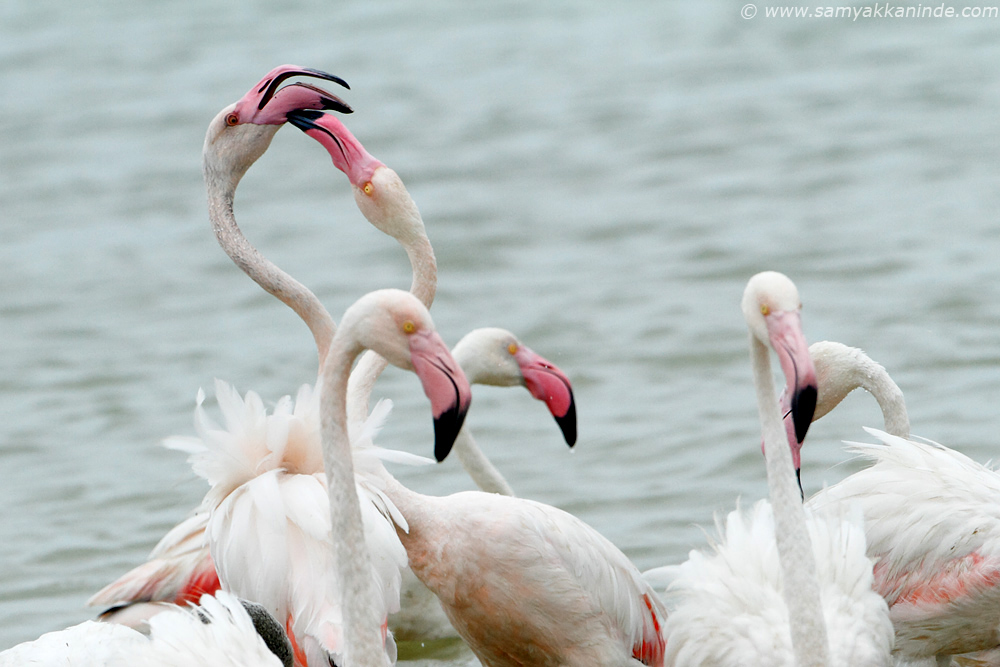
9. The greater flamingos though social would mostly found beak clasping while feeding once in a while.
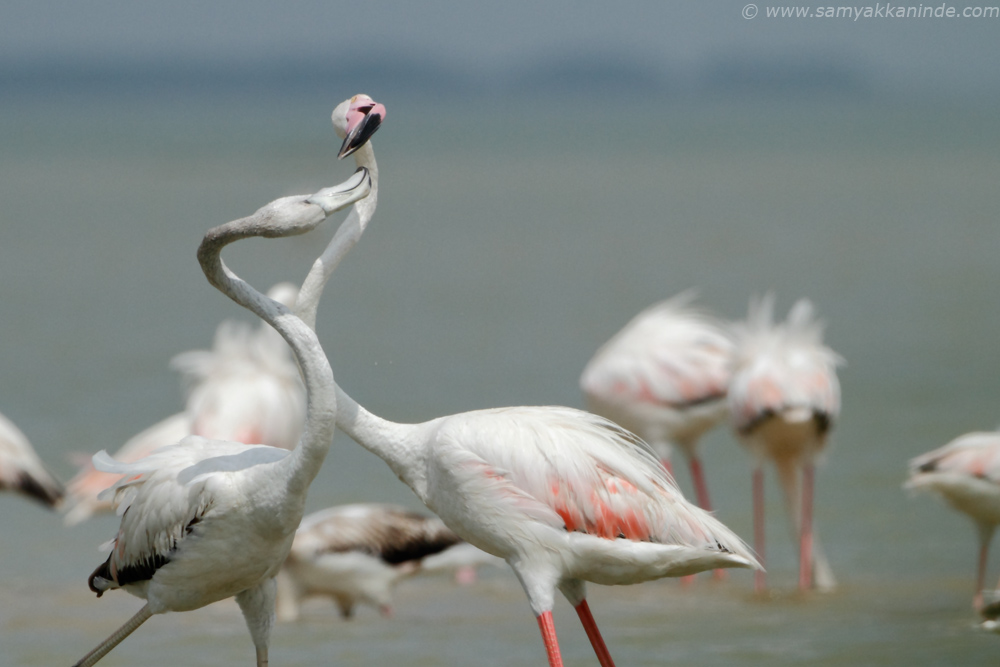
10. The long necks of the flamingos move around nicely and can turn and twist not just while feeding but also while fighting with each other.
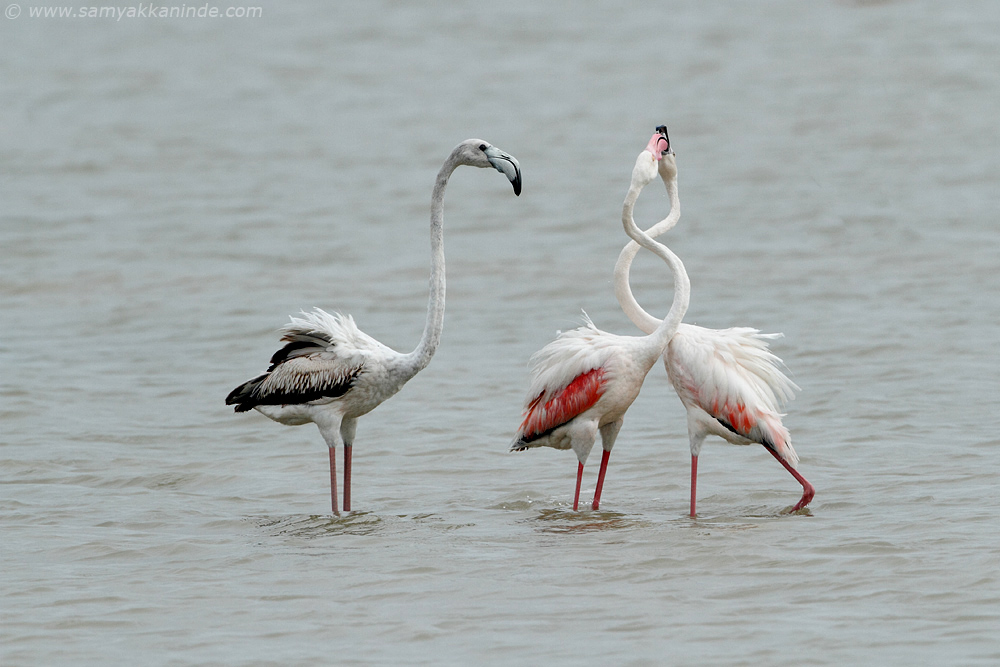
11. While the adult flamingo gets to its white pinkish plumage, the juvenile normally is brown grey and start getting thier pink in underparts. Seen here is two fighting and twisting the neck to form a "infinity" sign. A juvenile flamingo watches the fight.
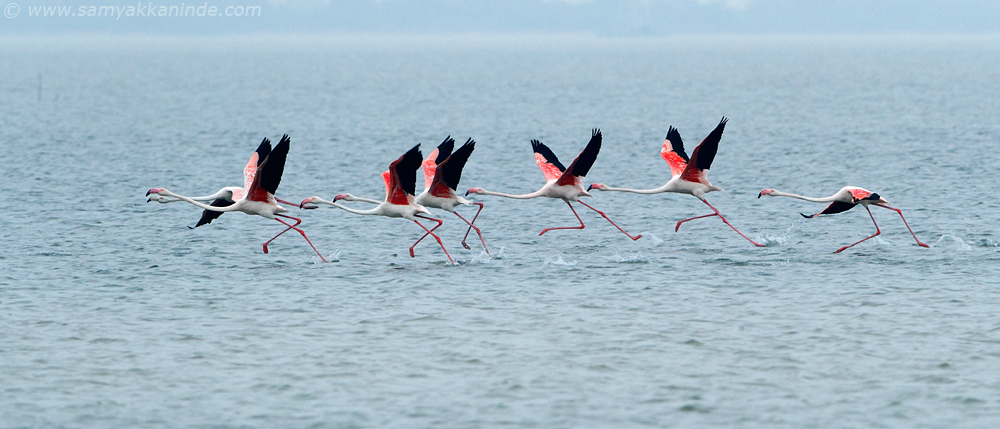
12. The thin long legs not just help them to stir mud underwater while feeding but also to splash on the water while taking off from the water. Most of the time, the take offs and landing is awesomely synchronised and the sync in aerial acrobatic show is a treat to watch.
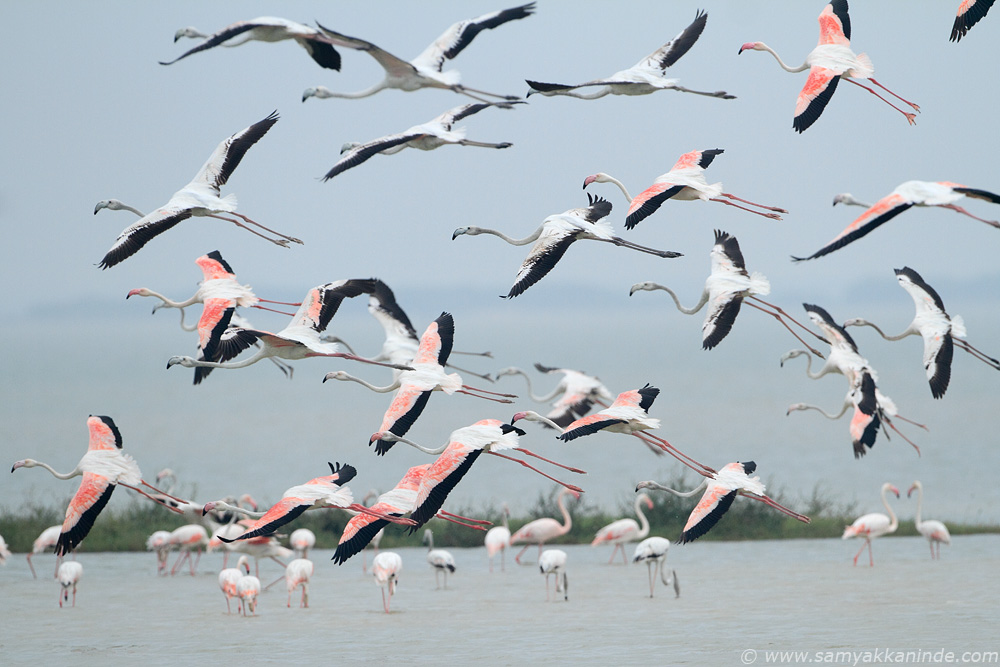
13. Seen here is a mixed flock of few adult and few juvenile flamingos flying together.
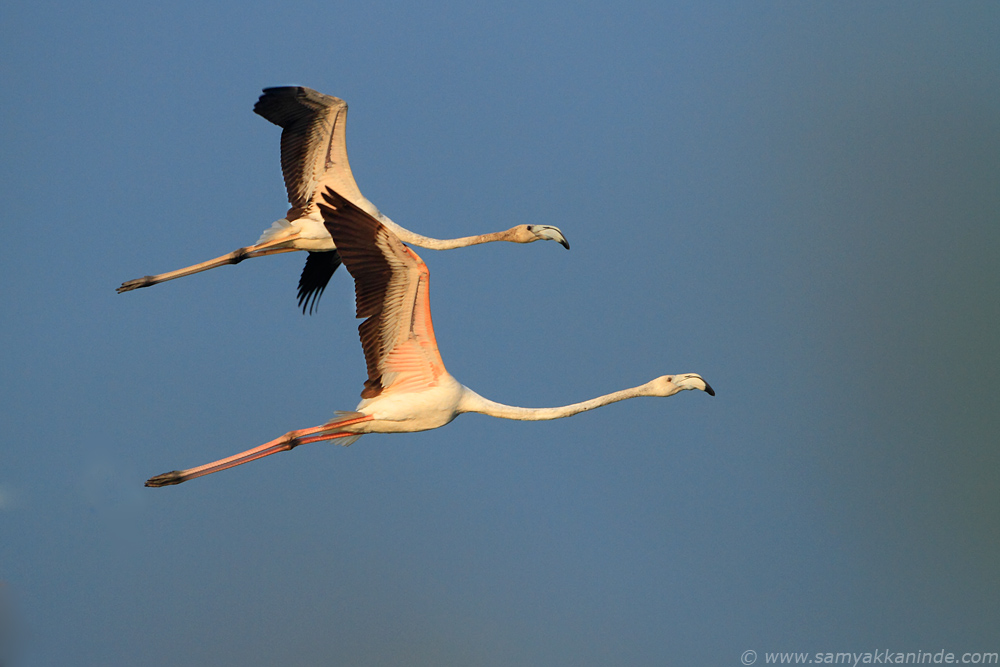
14. Two juvenile flamingos are seen here who are getting theit pink in underparts in morning light at kelambakkam.
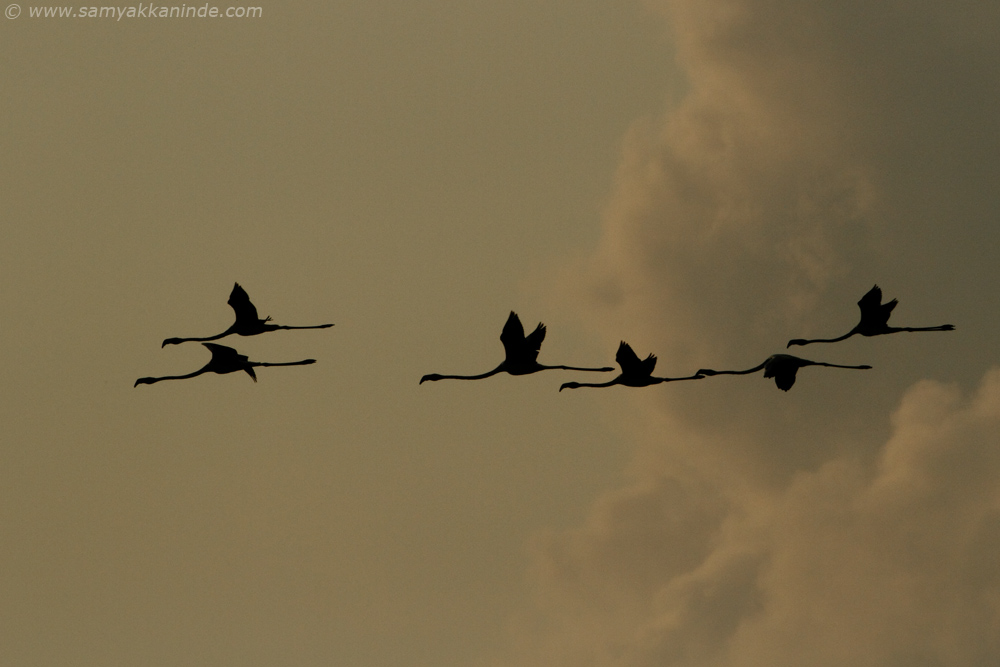
15. Flamingo silhoutte flying in the morning at Kelambakkam, chennai.
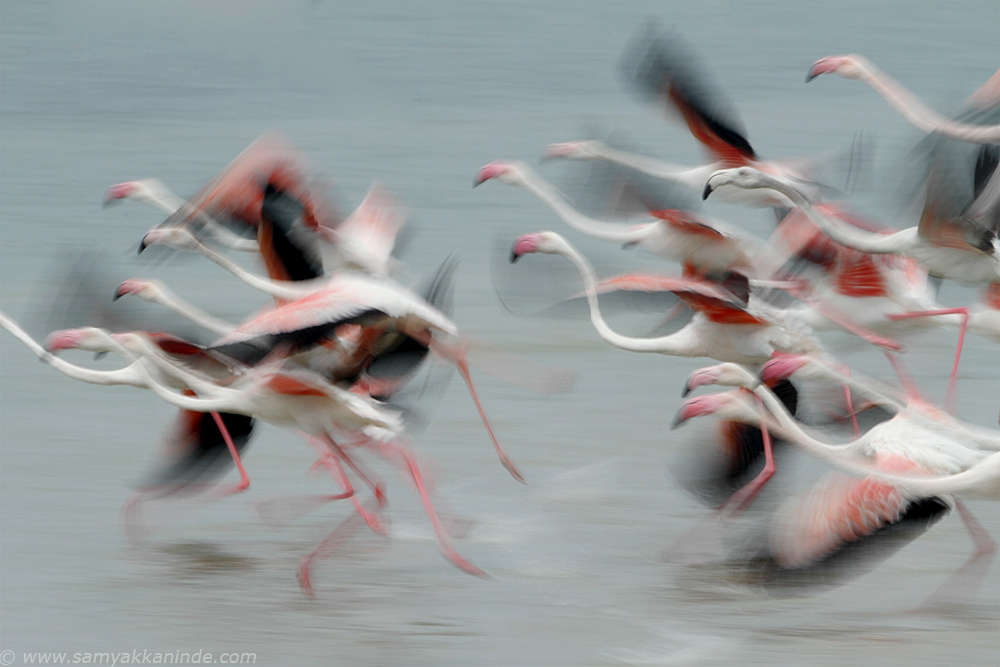
16. The flamingo take off is beautiful thing to watch. They start running over water making big splashes, flapping their wings and then slownly taking off from water into air after getting a good speed.
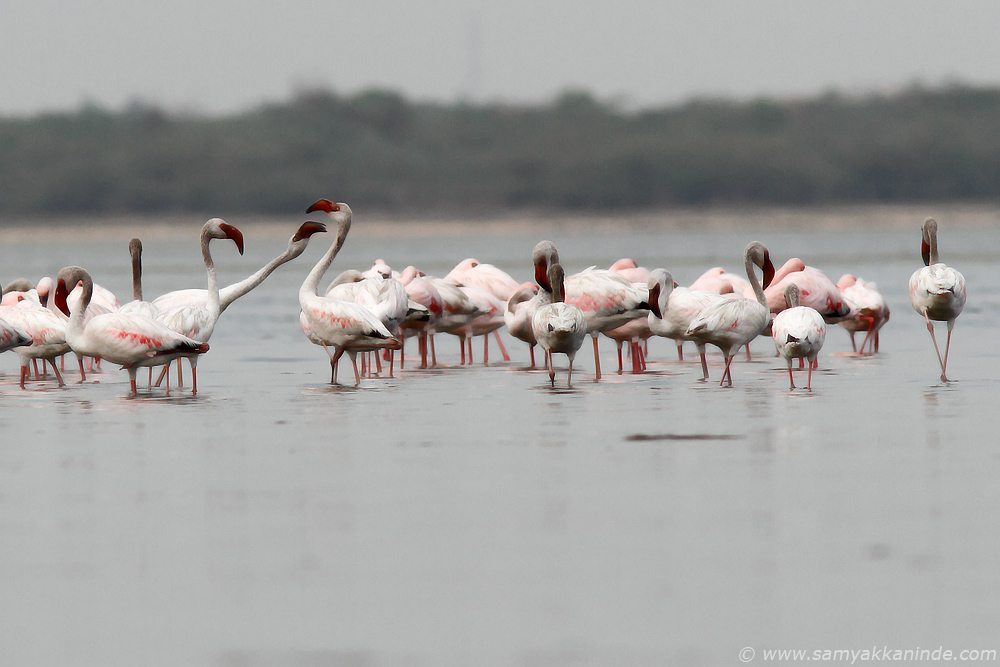
17. The Lesser Flamingo (Phoenicopterus minor) seen here is "Near Threatened" species of Flamingo. They are found in small numbers around pulikat and recently been spotted in chennai at kelambakkam. They are the smallest of flamingos but sometimes mixed with greater flamingo flock. The clear difference between greater and lesser flamingo is the beak is completely dark in lesser. This was shot at Annamalaicherry, Pulikat.